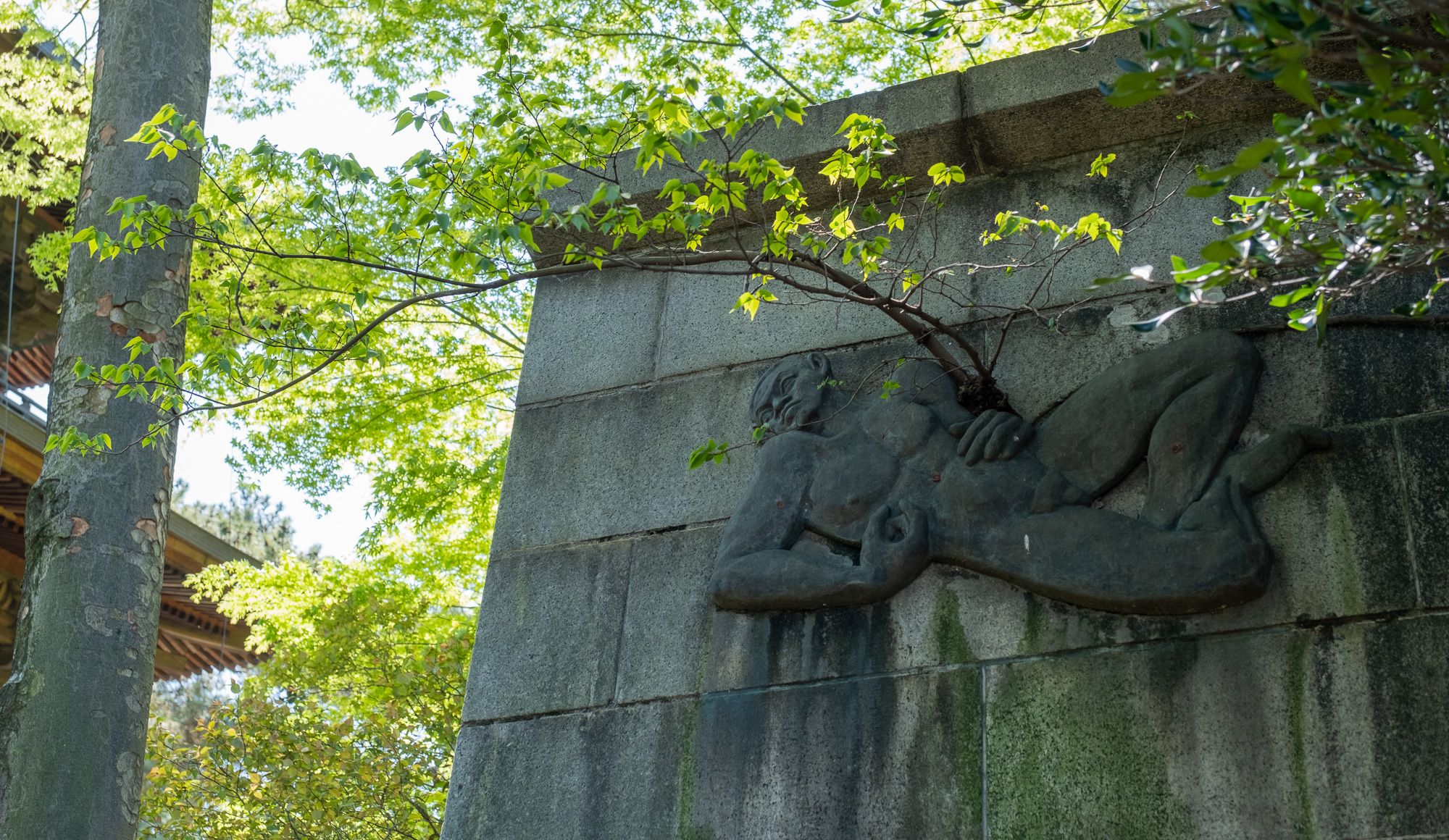Tokyo's temple of kittens
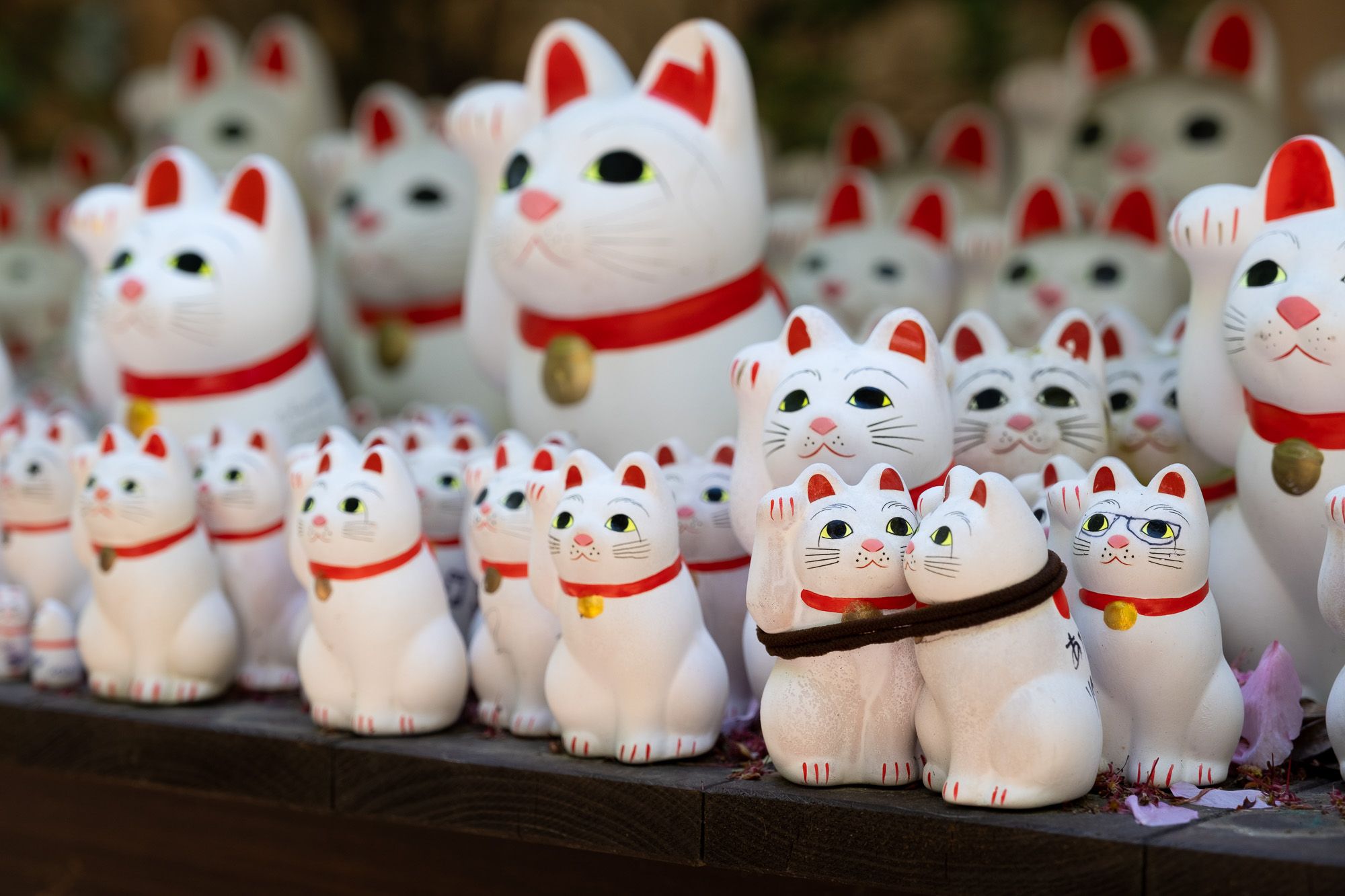
The New York Times recently featured Tokyo in its 36 hours travel column (again). The author, Motoko Rich, has become essential reading for me over the last few years – not just her pieces in the Times, but also her commentary on daily life in Japan. Of course, I was curious what she would recommend.
Think of Tokyo as a warren of concealed gems
In the introductory paragraph, she compares Tokyo to a warren of concealed gems, rewarding those who venture off the beaten path, which I could not agree more to. Shibuya and Shinjuku are certainly not among my top picks when deciding where to go in Tokyo, particularly in the evening. Therefore, I was happy to see that all key stops Rich recommends are outside of the immediate city center. In fact, two out of the three –Todoroki Ravine and Gotokuji temple– are practically in the neighborhood! And yet, up until now I had not visited Gotokuji, the temple known for being loaded with litte figurines of beckoning cats. So, on a recent Sunday morning, I put on my walking shoes and headed over there.
Visiting Gotokuji
The time is located in central Setagaya, on the west side of Tokyo. The closest station is Miyanosaka. From Shibuya, the easiest way to get there is via the Den-en-toshi Line to Sangenjaya, where you can change to the Tokyu-Setagaya Line. You can also walk from Sangenjaya, as there is a nice little alleyway which takes you from the Taishido neighborhood all the way to Gotokuji temple.
Leading up to the temple is a straight, quiet road lined with conifers. Quite the contrast to something like Sensō-ji in Asakusa where the entrance is lined with souvenir shops and thousands of other tourists. No, this one is different.
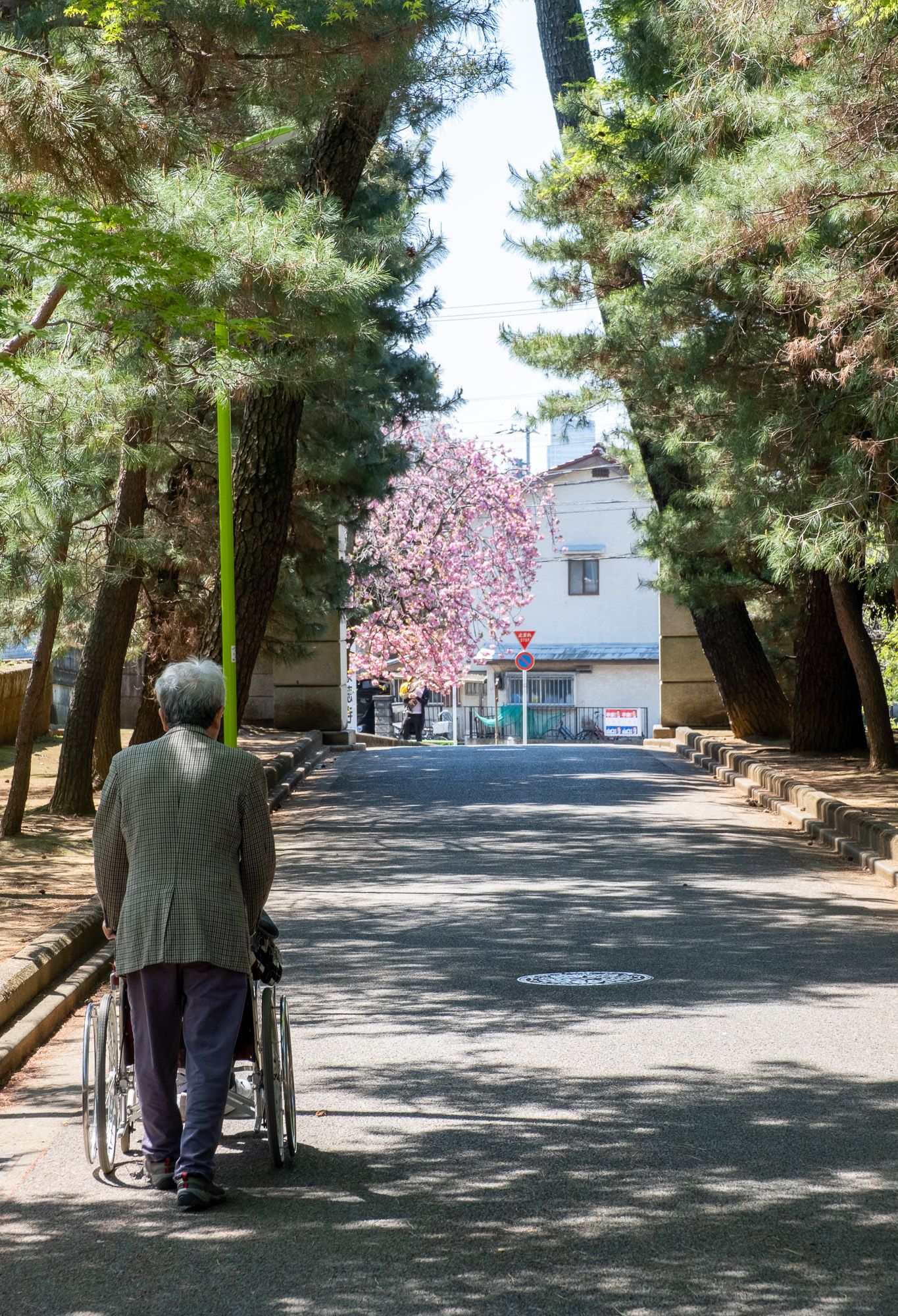

Where are the cats?
At first glance, there's nothing that gives away Gotokuji's claim to fame. The entrance area features a quaint little garden, Japanese maple trees, and a three-story pagoda. It is not until you pass the Buddha Hall that the first specimen comes into sight. On the left towards the cementery, a bronze statue greets visitors to a separate area which serves as the designated cat corridor.
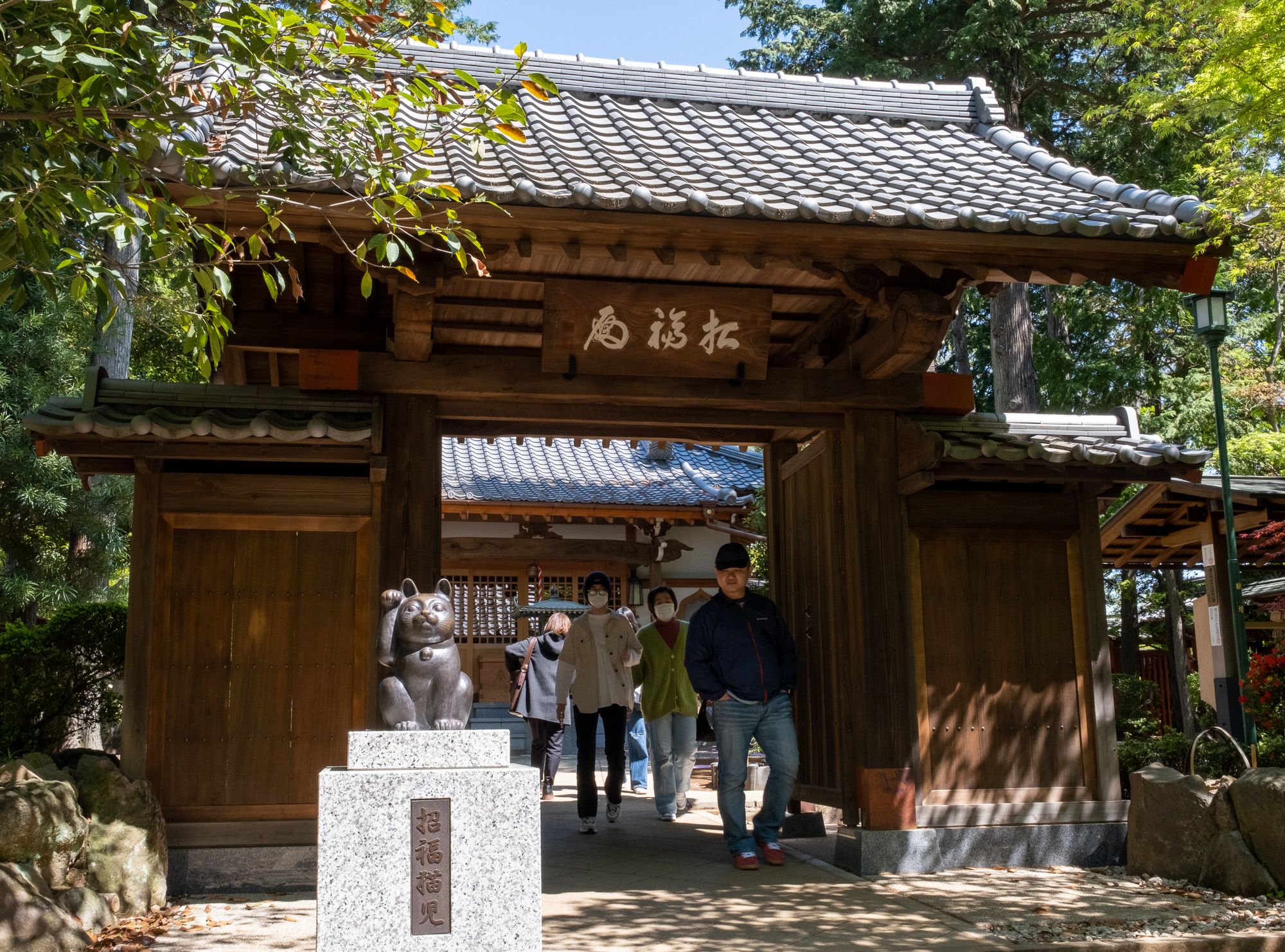
Enter the gate and you will already notice a few individual cat statues here and there – balanced on a rock, hidden beneath the trees. Continue around the temple and you will reach the heart of the kitten den. Thousands of white porcelain maneki-neko in various sizes, presumably hand-painted by some diligent old lady who supplies them to the temple. They line the narrow path around the building, stacked tightly on wooden shelves. Some of them still glister in the sun, others have taken on a moss green patina. Some have been written on by their original owners to wish for good fortune, or simply to promote their Instagram accounts. Shapes and facial expressions vary. The lady must have changed styles at some point in time.
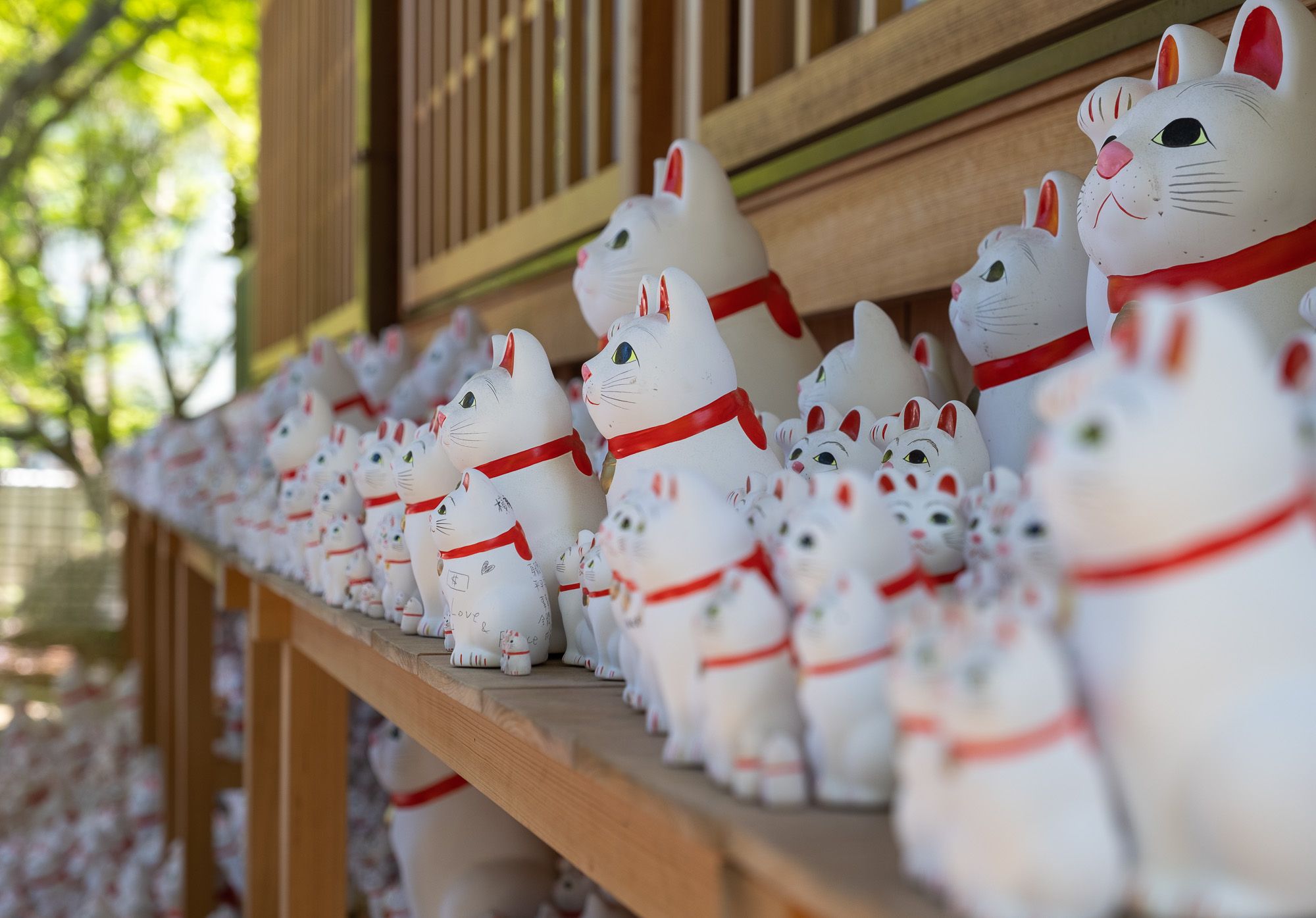

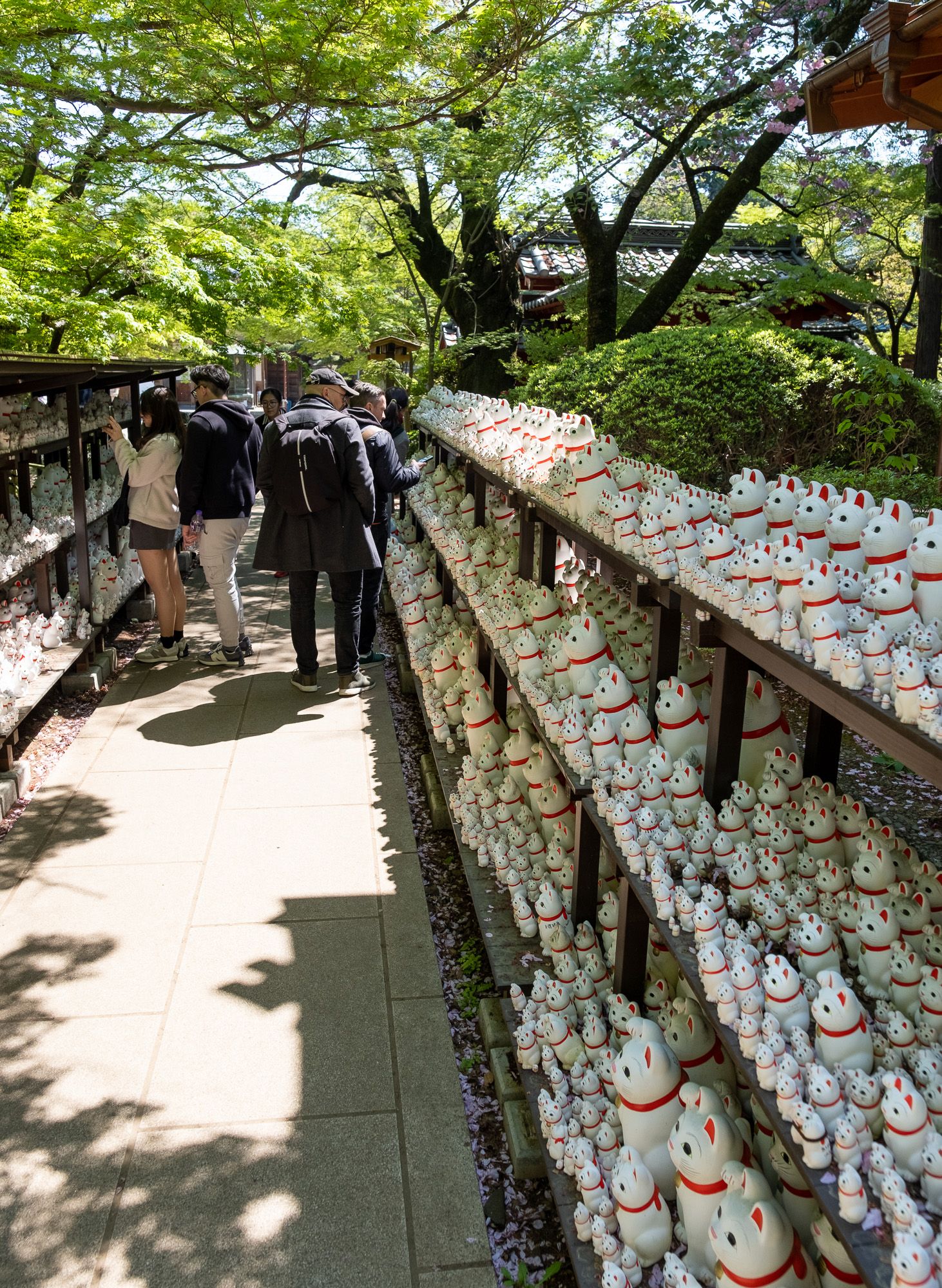

Why all the cats?
So what's up with all that cats, you ask. Apparently the legend of the maneki-neko goes all the way back to the 17th century. A Japanese lord about to be caught in a thunderstorm was invited into the temple by a cat beckoning him over (hence the name beckoning cat, it is not actually waving). Grateful to the cat for offering him shelter, he decided to dedicate the temple to his clan and make the cat its patron. As the temple grew more important over time, the cat was said to have brought good fortune to the place. So, Gotokuji is actually where the widely known symbol of the "lucky cat" originates from.
If you choose to take a lucky cat home with you or leave one behind at the temple, should you still find an empty spot, there's a shop for that on the temple grounds. Besides the cat statues you can also purchase other souvenirs, such as Ema (small wooden boards, usually meant to be left at the shrine for good fortune) which are, you guessed it, cat-themed as well.

Not just for cat lovers
Should you visit Gotokuji then? Absolutely, even if you are a dog person! The temple area itself has more to offer than just instagramable figurines. The Japanese garden invites for a relaxing walk and even the adjacent cementery is worth a visit, I would argue. Furthermore, as Motoko Rich also points out in her NYT piece, use the opportunity to take a walk though Tokyo's residential areas. One of the surprising realizations that people make when coming here for the first time is that this city is an extremely walkable one. And I cannot recommend you enough to try it out yourself. If you only rely on the metro to get around, it can easily feel like Tokyo is a network of loosely connected islands. You hop from Meguro, to Akihabara, to Asakusa without ever seeing much in between, when it's actually the in-between areas – the tiny urban gardens, the hidden shrines, the neighborhood restaurants – that make this city so livable despite its huge size.
I hope you all are enjoying April so far. Don't get lost in a thunderstorm out there.
